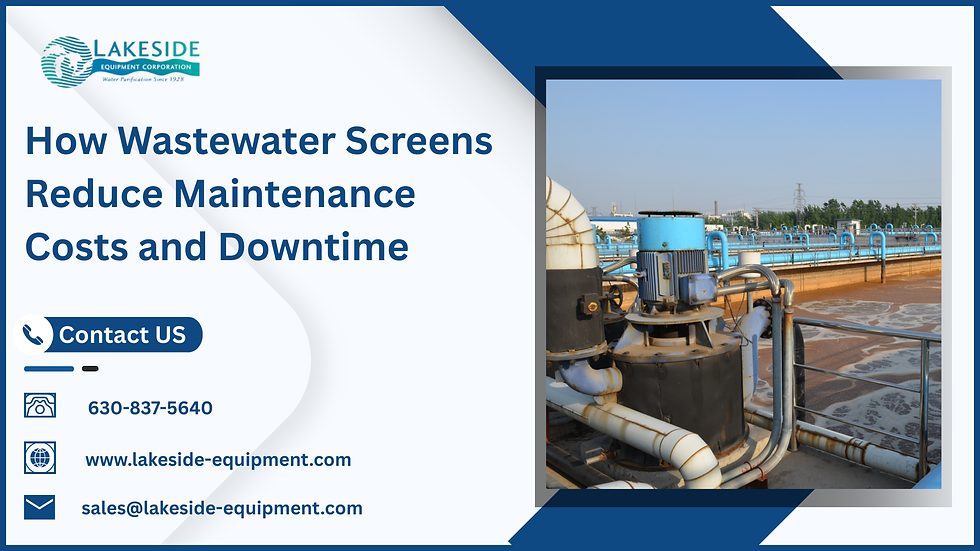Understanding Inorganic Removal in Wastewater Treatment
- lakesideequipment

- Feb 1, 2023
- 1 min read
Inorganic removal in wastewater treatment refers to the process of removing inorganic substances, such as minerals, metals, and salts, from wastewater. The removal of these substances is important because they can negatively impact the environment and human health if they are not properly removed from wastewater before it is released into the environment.
There are several methods used for inorganic removal in wastewater treatment, including chemical precipitation, ion exchange, and adsorption.
Chemical precipitation involves adding a chemical, such as aluminum or iron salts, to the wastewater to cause the inorganic substances to settle out and form solids that can be removed. This method is often used to remove heavy metals from wastewater.
Ion exchange involves exchanging positively charged ions in wastewater with positively charged ions from a resin or other material. This method is commonly used to remove salts, such as nitrates and sulfates, from wastewater.
Adsorption is a process in which inorganic substances are removed from the wastewater by attaching to the surface of a material, such as activated carbon or zeolites. This method is often used to remove organic and inorganic contaminants from wastewater.
Overall, inorganic removal is an important step in the wastewater treatment process to ensure that the water released into the environment is safe for humans, animals, and the environment.
MORE RESOURCES:-




Comments